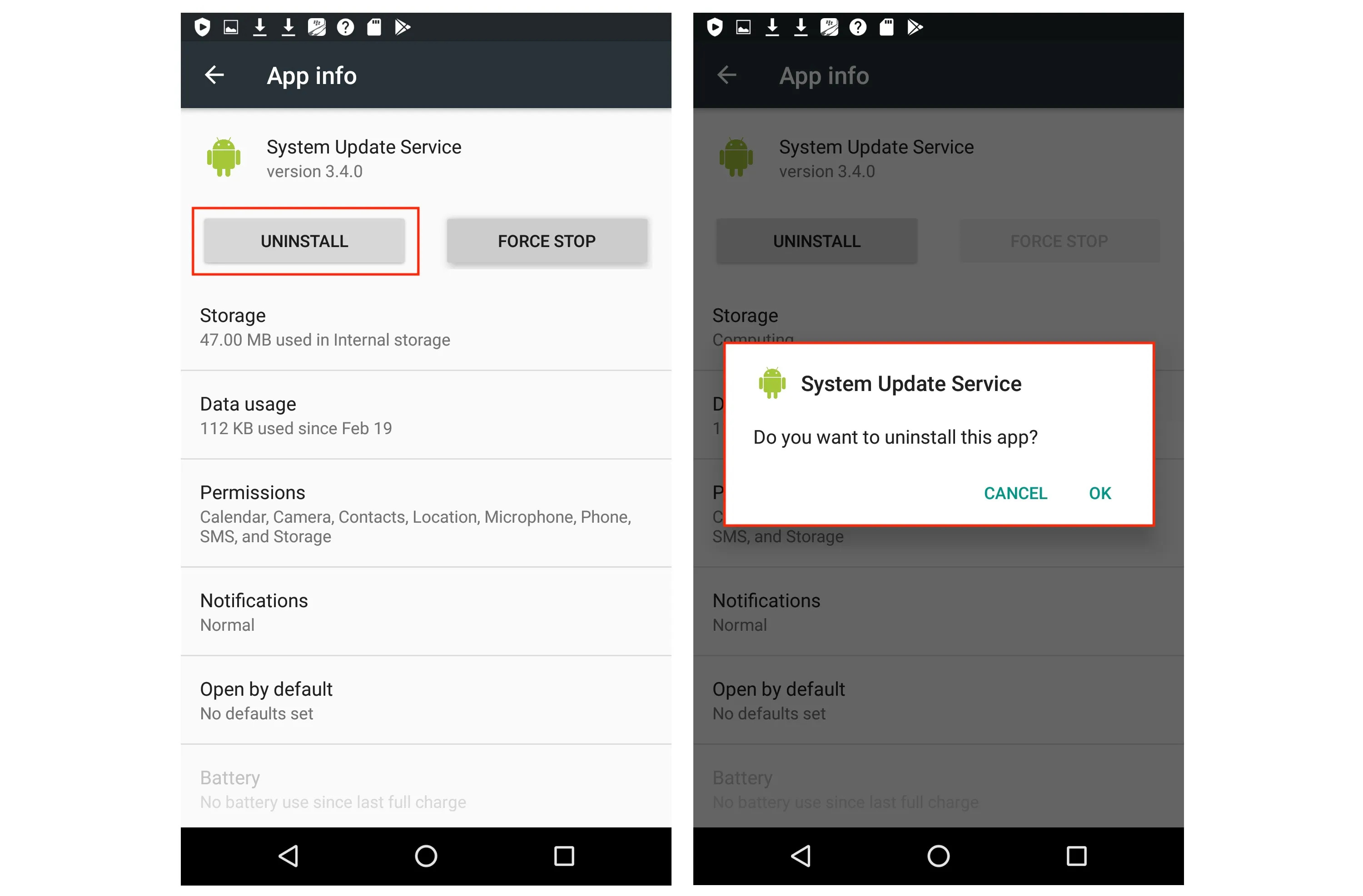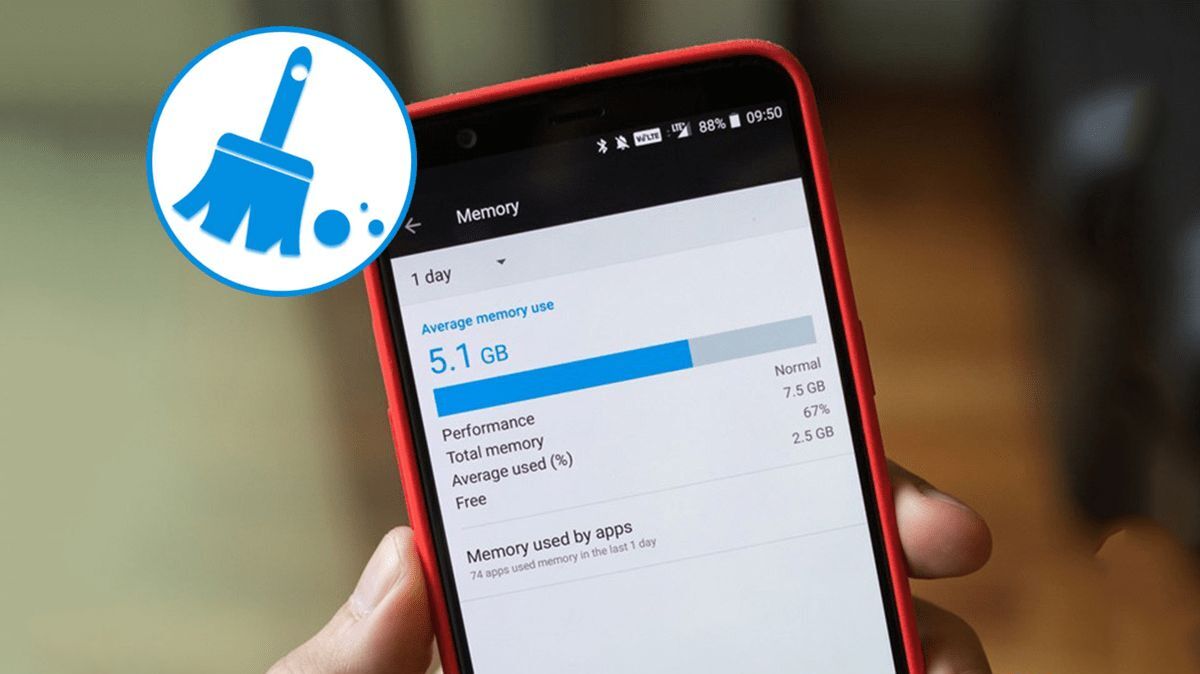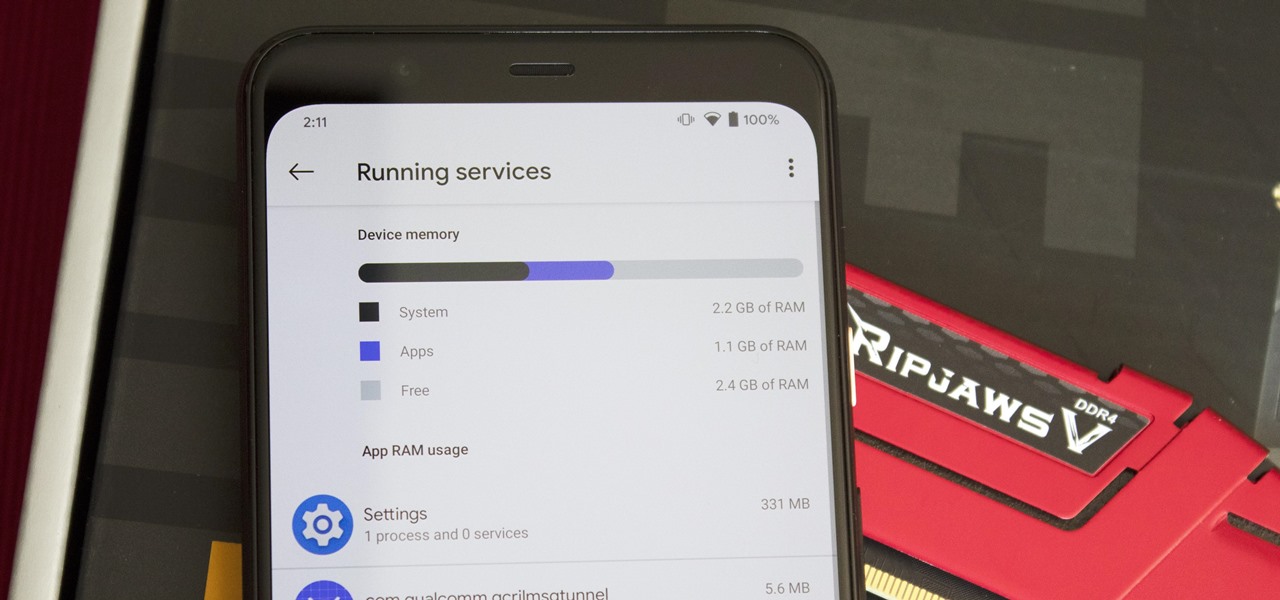Introduction
Android is a powerful and versatile operating system that constantly evolves with updates, offering new features and improvements to enhance user experience. However, not all updates may be well-received by users. Whether it’s due to compatibility issues, performance problems, or simply a personal preference for a previous version, there may come a time when you need to uninstall an update on your Android device. In this article, we will explore the process of uninstalling updates on Android and provide you with alternative methods to revert to a previous version if needed.
Android updates are released by device manufacturers and Google to fix bugs, enhance security, introduce new features, and improve overall system performance. These updates may be in the form of major system upgrades, such as the transition from Android 10 to Android 11, or minor updates, which are frequent releases aimed at addressing specific issues or adding new functionalities. While updates are generally beneficial, they may sometimes introduce unwanted changes or create conflicts with certain apps or device configurations.
There are several reasons why you may want to uninstall an update on your Android device. Compatibility issues may arise when an update is not fully compatible with certain apps or hardware components, leading to crashes or malfunctions. Performance problems may occur if the update introduces excessive resource demands, causing your device to slow down or drain its battery quickly. Additionally, aesthetic or functional changes introduced by the update may not align with your personal preferences or the way you are accustomed to using your device.
Before proceeding with the process of uninstalling an update, it is important to consider a few factors. First, keep in mind that uninstalling an update will revert your device to the previous version that was installed before the update. This means that any new features or security patches introduced in the update will be removed. Additionally, it is crucial to note that not all updates can be uninstalled. Major system upgrades, such as transitioning from one Android version to another, cannot be uninstalled. However, minor updates can usually be uninstalled, allowing you to roll back to a previous version.
Understanding Android Updates
Android updates play a crucial role in keeping your device secure and up to date with the latest features and improvements. These updates are typically released by Google for the Android operating system and by manufacturers to optimize their devices for compatibility and performance. Understanding the different types of updates and how they work can help you make informed decisions about managing your device’s software.
There are two main types of Android updates: major system upgrades and minor updates. Major system upgrades, also known as firmware updates, involve transitioning from one major Android version to another. For example, upgrading from Android 10 to Android 11. These updates bring significant changes to the user interface, introduce new features, and enhance overall system functionality. Major system upgrades often require substantial testing and optimization by device manufacturers before they can be released to users.
Minor updates, on the other hand, are smaller, incremental releases that aim to address specific issues or introduce minor improvements. These updates can include bug fixes, security patches, performance optimizations, and enhancements to existing features. Minor updates are generally more frequent and can be installed over the current version of Android without the need for a complete system upgrade. They are designed to provide users with a smooth and consistent experience while ensuring their devices remain secure and efficient.
Android updates are typically distributed over-the-air (OTA), meaning they are sent directly to your device through a wireless connection. When a new update is available, you will receive a notification prompting you to download and install it. It is recommended to have a stable internet connection and sufficient battery level before initiating an update. You can also choose to automatically download and install updates in the background or manually check for updates and decide when to install them.
Apart from official system updates, some manufacturers also release custom software updates for their devices. These updates, commonly referred to as “firmware updates” or “ROM updates,” are specific to a particular device model or brand. They may include proprietary features, performance optimizations, or UI modifications. While these updates can provide additional enhancements, it’s important to note that they are separate from official Android updates and may not receive support or future updates from Google.
Reasons to Uninstall an Update
While Android updates are generally beneficial and intended to improve the overall user experience, there are certain instances where you may want to uninstall an update. Here are some common reasons why you might consider reverting to a previous version of Android:
- Compatibility Issues: Sometimes, an update may introduce compatibility issues with certain apps or hardware components on your device. This can lead to app crashes, functionality problems, or even rendering some apps unusable. If you experience such issues after installing an update, uninstalling it can help resolve compatibility conflicts and restore the normal functioning of your device.
- Performance Problems: In some cases, an update may negatively impact the performance of your device. This can manifest as slow response times, laggy interface, or excessive battery drain. If you notice a significant decline in performance after installing an update, uninstalling it can potentially restore your device’s previous level of performance.
- Unwanted Changes: Updates often bring changes to the user interface, app layouts, or default settings. While some users appreciate these changes, others may prefer the previous version’s aesthetics or functionality. If you find that an update has introduced unwanted changes that disrupt your workflow or user experience, uninstalling it can help revert back to the previous version’s look and feel.
- App Incompatibility: Certain apps may not be fully optimized or updated to work smoothly with the latest Android version. If you rely heavily on specific apps for work or personal use and discover that they are not functioning properly after an update, uninstalling the update can resolve the compatibility issues and allow you to use the apps without any disruptions.
- Data Loss or Corruption: Although rare, there have been cases where Android updates have resulted in data loss or corruption for some users. If you have experienced any data-related issues, such as missing files or corrupted documents, after installing an update, uninstalling it may help recover lost or affected data. However, it is crucial to back up your data regularly to minimize the risk of permanent loss.
It’s important to note that uninstalling an update will revert your device to the previous version that was installed before the update. This means that any new features, security patches, or bug fixes introduced in the update will be removed. Consider the specific issues you are facing, weigh the pros and cons, and carefully decide whether uninstalling the update is the best course of action for your particular situation.
Before Uninstalling an Update
Before proceeding with the uninstallation of an update on your Android device, it is important to consider a few factors and take necessary precautions. Here are some key steps to follow before uninstalling an update:
- Consider the Impact: Carefully evaluate the specific issues you are facing with the update and determine if uninstalling it is the appropriate solution. Understand that uninstalling an update will revert your device to the previous version, potentially removing new features, security patches, and bug fixes that were introduced in the update.
- Backup Your Data: It is essential to back up your data before uninstalling an update to avoid any potential loss. This includes backing up your contacts, messages, app data, and any other important files or documents stored on your device. You can use cloud storage services, such as Google Drive or Dropbox, or connect your device to a computer and manually copy the necessary files.
- Check for App Compatibility: If you rely heavily on specific apps, ensure that they are compatible with the previous version of Android that you will be reverting to. Some apps may require certain Android versions or have specific compatibility requirements. Check with the app developers or their official websites for compatibility information.
- Disable Automatic Updates: To prevent the reinstallation of the update you want to uninstall, consider disabling automatic updates on your device. This will give you more control over the update installation process and allow you to manually choose which updates to install in the future.
- Safeguard Your Device: While rare, there is a small chance that the uninstallation process could encounter errors or complications. To minimize the potential risks, ensure that your device is fully charged or connected to a power source during the uninstallation process. Additionally, take note of your device’s model and specific Android version before proceeding, as this information may be helpful in case you need to seek assistance or troubleshooting.
By taking these precautionary measures, you can minimize the risk of data loss, ensure app compatibility, and prepare yourself for the potential impact of uninstalling an update on your Android device. It is important to note that the process of uninstalling an update may vary slightly depending on the device manufacturer or Android version you are using. Therefore, it is recommended to consult your device’s manual or seek guidance from official support channels for detailed instructions specific to your device.
Step-by-Step Guide to Uninstalling an Update on Android
If you have decided to uninstall an update on your Android device, follow these step-by-step instructions to revert to the previous version:
- Access System Settings: Open the Settings app on your Android device. You can usually find it in the app drawer or by swiping down from the top of the screen and tapping on the gear icon.
- Navigate to Apps & Notifications: Scroll down and locate the “Apps” or “Apps & Notifications” option in the Settings menu and tap on it. This will open a list of all installed applications on your device.
- Find the System App: In the list of applications, locate and tap on the “Show System” or “System Apps” option. This will display all the system apps installed on your device.
- Select the App to Uninstall: Scroll through the list of system apps and find the app corresponding to the update you wish to uninstall. Tap on it to access its App Info page.
- Access App Info: On the App Info page, you will find various details about the app, including its version, storage usage, and permissions. Tap on the “Uninstall Updates” or “Uninstall” button to initiate the uninstallation process.
- Confirm the Uninstallation: A confirmation prompt will appear, asking if you want to uninstall the updates for the selected app. Review the prompt and tap “OK” or “Uninstall” to confirm the uninstallation. Note that this process may take a few moments to complete.
- Restart Your Device: Once the uninstallation process is complete, it is recommended to restart your device. This will allow the changes to take effect and ensure that the previous version of the app is fully restored.
After restarting your device, the selected update will be uninstalled, reverting your device to the previous version. Keep in mind that this process will only uninstall the updates for the specific app you selected, and not the entire Android operating system. If you wish to uninstall updates for multiple apps, repeat these steps for each individual app.
It is important to note that not all updates can be uninstalled. Major system upgrades, such as transitioning from one Android version to another, cannot be uninstalled through this method. However, minor updates to individual apps or system components can typically be uninstalled using the steps outlined above.
Alternative Methods to Uninstall an Update
In addition to the step-by-step guide mentioned earlier, there are a few alternative methods you can explore to uninstall an update on your Android device. These methods may vary depending on your device’s manufacturer and Android version. Here are some alternative approaches you can try:
- Factory Reset: Performing a factory reset on your device will revert it to its original state, removing all installed apps and updates. This method completely wipes your device’s data, so it is crucial to back up your important files and data beforehand. To perform a factory reset, go to the Settings app, select “System” or “System & Device,” and then choose “Reset” or “Reset Options.”
- Flash Previous Firmware: If you have advanced technical knowledge, you can flash a previous firmware version onto your device. This method involves downloading the firmware file specific to your device model and using specialized tools like Odin for Samsung devices or fastboot for other manufacturers to install it. This process requires caution and thorough research to ensure compatibility and minimize the risk of damaging your device.
- Custom ROMs: Another alternative is to install a custom ROM, which is a modified version of Android created by third-party developers. Custom ROMs can provide additional features and customization options, and they often include the ability to uninstall updates or revert to previous versions. However, the process of installing a custom ROM requires a rooted device and may void your device’s warranty.
- Manufacturer-Specific Tools: Some device manufacturers provide their own tools or software that allow you to manage updates and uninstall specific updates. These tools may be available for download from the manufacturer’s website or pre-installed on your device. Check your device’s manual or visit the manufacturer’s official support page for more information about these specialized tools.
- App Store Rollback: In some cases, you may be able to uninstall updates for specific apps by accessing the app store. Open the app store on your device, go to the “My Apps” or “Installed” section, locate the app you want to uninstall updates for, and choose the option to uninstall updates. This method is limited to individual app updates and may not be available for all apps.
It’s important to note that these alternative methods may have varying degrees of difficulty and potential risks. Exercise caution and thoroughly research each method before attempting it on your device. Consider consulting official support channels or seeking guidance from experienced users if you are unsure about the process. Additionally, keep in mind that some methods, such as flashing firmware or installing custom ROMs, may void your device’s warranty and can result in permanent damage if not performed correctly.
Risks and Considerations
Before proceeding with the uninstallation of an update on your Android device, it is crucial to understand and consider the potential risks and consequences involved. Here are some important factors to keep in mind:
- Data Loss: Uninstalling an update can sometimes result in the loss of data or settings associated with the updated app or system component. It is crucial to back up your important data before proceeding to minimize the risk of permanent loss.
- Security Risks: Updates often include important security patches that address vulnerabilities and protect your device from potential threats. By uninstalling an update, you may be exposing your device to security risks and leaving it vulnerable to potential attacks. It is essential to stay up-to-date with the latest security updates to ensure the safety of your device and personal data.
- App Incompatibility: After uninstalling an update, you may encounter compatibility issues with certain apps that rely on newer versions of Android or include features specific to the updated version. Some apps may not function properly or may not be compatible with the previous version you have reverted to. This can lead to crashes, bugs, and limited functionality.
- Limited Support: After uninstalling an update, you may no longer receive support or updates from the app developers or device manufacturer related to the version you have reverted to. This means you may miss out on future bug fixes, performance improvements, and new features introduced in subsequent updates.
- Device Warranty: Some device manufacturers consider uninstalling updates or modifying the software as a violation of the device’s warranty terms. Performing certain methods, such as flashing firmware or installing custom ROMs, can void your device’s warranty and result in the loss of manufacturer support for any issues you may encounter.
- Irreversible Changes: In some cases, the process of uninstalling an update or flashing firmware can result in irreversible changes to your device’s software. These changes may impact the device’s stability, performance, and overall functionality. It is crucial to thoroughly research and understand the consequences before proceeding with any advanced methods.
Before uninstalling an update, carefully evaluate the risks and potential consequences based on your specific situation. Consider the specific issues you are facing, the importance of the updated features or security patches, and the impact on app compatibility. If you are uncertain about the process or unsure whether uninstalling the update is the appropriate solution, it is recommended to seek guidance from official support channels or consult with experienced users to ensure you make an informed decision.
Conclusion
Uninstalling an update on your Android device can be a useful solution when you encounter compatibility issues, performance problems, or unwanted changes introduced by an update. However, it is important to approach this process with caution and carefully consider the risks and consequences involved.
Before uninstalling an update, take the necessary precautions, such as backing up your data and considering alternative methods. Understand that uninstalling an update will revert your device to the previous version, potentially removing new features and security patches that were introduced. Assess the specific issues you are facing, weigh the potential risks and benefits, and make an informed decision based on your individual needs and circumstances.
It is recommended to consult your device’s manual or official support channels for detailed instructions specific to your device. Additionally, seeking guidance from experienced users or official support can help ensure a smoother process and minimize the risks associated with uninstalling updates.
Remember that keeping your device updated with the latest security patches and system improvements is generally recommended. Updates play a crucial role in maintaining the performance, security, and functionality of your Android device. If you choose to uninstall an update, regularly check for further updates and consider installing them when they become available to stay up to date with the latest features and security enhancements.
Overall, the decision to uninstall an update should be taken carefully, considering the specific issues you are facing, weighing the risks and benefits involved, and ensuring that you take necessary precautions to safeguard your data and device. By being mindful of these factors, you can make an informed choice that aligns with your needs and preferences, ultimately maintaining an optimal Android experience.

























